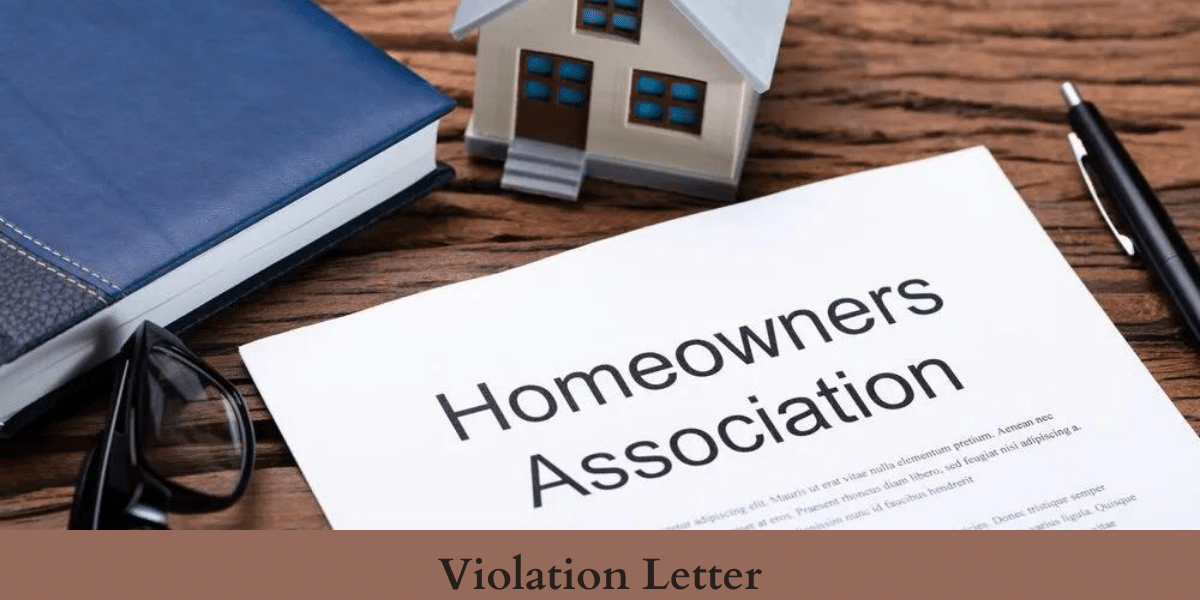ISAACSON LAW BLOG
Tackling HOA Violation Letters: Managing Emotions

Tackling HOA Violation Letters: Managing Emotions
When an HOA has to write a “violation letter” and send it to a resident within the community, times can turn tense.
Most residents who receive letters of violation typically react, firstly, with negative emotions. These can be anything from aggravated, embarrassed, and offended to sometimes flying into a blind rage.
Taking emotions out of the equation does little to resolve how dicey things can get. o be clear, violation letters are absolute necessities for HOAs. They are an integral step to enforcing the community’s governing documents, design and community standards rules. HOAs must utilize the violation process and use violation notices promptly and effectively. This is a delicate process that requires attention to detail, clarity, and adherence to legal requirements.
Below are some the general statutory requirements for a violation notice. For specific recommendations, you should contact a qualified attorney.
A Letter of Violation should:
- Clearly Identify the Violation: Start the letter by clearly identifying the violation. Use specific language. Describe the issue, for example, whether it’s an unauthorized architectural change, a landscaping violation, or a breach of community rules. Be factual. Avoid subjective statements.
- Reference the Governing Document(s): Refer explicitly to the relevant sections of your community’s governing documents that the resident has violated. These could include HOA bylaws, CC&Rs (Covenants, Conditions, and Restrictions), or any specific rules and regulations. This defines the contractual nature of the failure to comply.
- State Proposed Action to Resolve the Violation: NRS 116.31031.1(c)(2) requires that an association specify in detail the proposed action to cure any alleged violation.
- Set a Time Limit for Correction: State a clear time limit for the resident to rectify the violation. Nevada law requires that an association provide a “reasonable opportunity” to cure the violation or to contest it at a hearing. Be reasonable and considerate of the challenges the resident might face. NRS 116.31031. This ensures transparency and gives the resident a fair opportunity to comply with community rules.
- State the Consequences of Non-Compliance: In an informative way, state the consequences that may result from continued non-compliance. In most situations, these might include fines, legal action, or other measures as specified in your governing documents. Say that these consequences are in place to maintain the community’s standards.
- Relay Contact Information and Resources: Provide contact information for relevant individuals within the HOA, such as the community manager or a designated contact person. Additionally, offer resources or guidance on how the resident can rectify the violation, such as recommending approved vendors for required modifications.
- Include a Photograph: NRS 116.31031.1(c)(3) requires that if the alleged violation relates to the physical condition of the unit, rounds for which it is possible to obtain a photograph, one must be included. Other requirements apply and the Association should generally be aware of the requirements imposed by NRS 116.31031.
As we know, the way we say things can be more important than we think. Here are some recommendations about that.
When drafting the violation letter, be 100% professionally polite. Avoid accusatory or confrontational statements and tones of voice. Focus on facts. Stay away from saying anything about feelings, suspicions, or motivations. Use a writing style based on streaming simple sentences one after another. Writing styles that use compound sentences or multiple phrases are harder to understand and can be more easily misconstrued. See.
Do’s and Don’ts
Do’s:
- Be Clear and Concise: Clearly articulate the violation. State the necessary steps for compliance. Avoid ambiguous language that may lead to misunderstandings.
- Include Relevant Documentation: When applicable, attach documents, photographs, or records that support your claim. Provide transparency and clarity.
- Provide Ample Time for Compliance: Offer a reasonable deadline for the resident to correct the violation. This ensures fairness. It acknowledges that residents might need time to address the issue.
- Maintain Professionalism: Be professional and respectful in tone throughout the letter. Avoid inflammatory language.
Don’ts:
- Threaten: Avoid threatening language or making statements that may be perceived as intimidation. The goal is to encourage compliance, not to create hostility. Never make a personal attack no matter how much background information you may know.
- Neglect Legal Requirements: Be sure your letter complies with all legal requirements and regulations. Overlooking or ignoring legal steps leads to complications for the HOA.
- Overlook Due Process: Provide residents with an opportunity to present their side of the story or appeal the decision when your governing documents allow for it. Fairness and due process are essential.
- Rely on Electronic Communication Only: Email is convenient, but oftentimes legal communication requires sending a hard copy through traditional mail. This ensures that the resident received the notice and is aware of the violation.
- “Bandwagon” Violations: Should a resident have multiple violations, do not put them all in one letter. A separate letter should be constructed and sent for each violation. This maintains clarity and avoids confusion. Now, use good judgment here. Sometimes one major incident, like a rowdy backyard party, will create multiple violations—okay, wrap these together. On the other hand, when you have a generally apathetic resident who has a scrap car left in the driveway, a home exterior in disrepair, and a yard that is reverting to weeds; each incident occurred at varying times and should be addressed with promptness then.
Effective violation letters lead to resolutions.
Violation letters politely call residents to tasks and help maintain thriving communities. By adhering to these guidelines, HOAs can better ensure that their violation letters are clear, fair, and conducive to positive progress.

LOCATION
- (702) 529-2559
- 7575 Vegas Dr, Suite 150N, Las Vegas, Nevada 89128
BUSINESS HOURS
Monday – Friday: 8:30am to 5:30pm
Recent Blog Posts

HOA Fee Increases: Don’t Surprise Homeowners


Why “Failure to Communicate” Is a Violation

